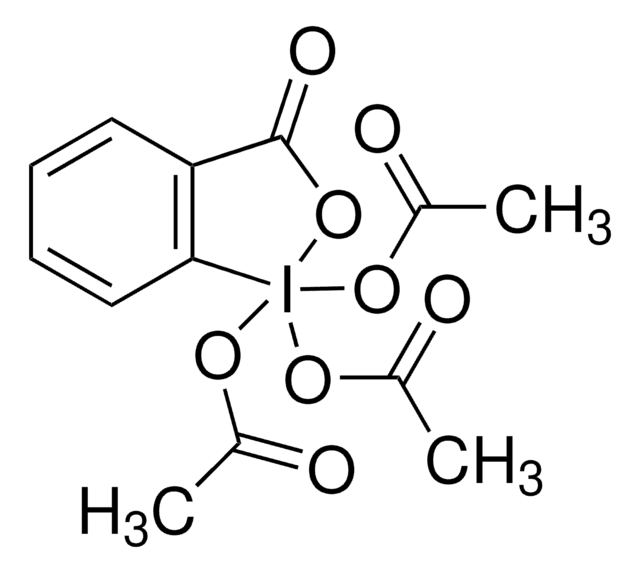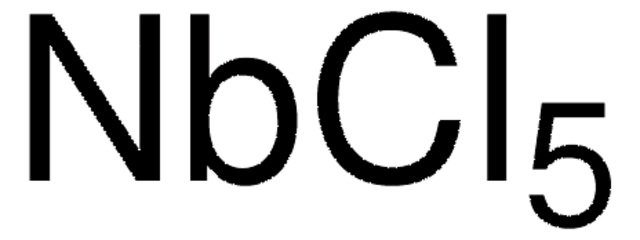241911
Tungsten(VI) chloride
≥99.9% trace metals basis
Sinónimos:
Tungsten hexachloride
About This Item
Productos recomendados
vapor pressure
43 mmHg ( 215 °C)
Quality Level
assay
≥99.9% trace metals basis
form
powder
reaction suitability
reagent type: catalyst
core: tungsten
impurities
≤1000.0 ppm Trace Metal Analysis
bp
347 °C (lit.)
mp
275 °C (lit.)
density
3.52 g/mL at 25 °C (lit.)
SMILES string
Cl[W](Cl)(Cl)(Cl)(Cl)Cl
InChI
1S/6ClH.W/h6*1H;/q;;;;;;+6/p-6
InChI key
KPGXUAIFQMJJFB-UHFFFAOYSA-H
¿Está buscando productos similares? Visita Guía de comparación de productos
General description
Application
- As a starting material to synthesize tungsten nanoparticles and Mo-doped urchin-like W18O49 Nanostructure using the hydrothermal method. The Mo-W18O49 electrocatalyst exhibited excellent electrocatalytic activity toward Hydrogen Evolution Reaction (HER). By doping Mo species into defect-rich W18O49 ultrathin nanowires, it has also been demonstrated to be an excellent candidate for photocatalytic N2 fixation to ammonia.
- To synthesize crystalline mesoporous WO3 with 11 nm pore size utilizing a high-molecular-weight amphiphilic block copolymer as the structure-directing agent. The materials performed admirably in terms of H2S gas sensing.
- To fabricate Tungsten disulfide and WS2/reduced graphene oxide (WS2/rGO) nanosheets by hydrothermal synthesis. The WS2/rGO nanosheets showed exceptional electrocatalytic activity for the hydrogen evolution reaction.
- To produce the WS2-nanoflowers@rGO and nitrogen-doped carbon spheres@WS2 composite as an anode material for enhanced electrode performance in lithium-ion batteries.
- As a dopant to fabricate TiO2 compact layers for perovskite solar cells with enhanced performance.
- As a catalyst to prepare self-healing epoxy composites with microcapsules.
- As a catalyst for transamidation of tertiary alkyl amides.
signalword
Danger
hcodes
Hazard Classifications
Aquatic Chronic 3 - Eye Dam. 1 - Skin Corr. 1B - STOT SE 3
target_organs
Respiratory system
Storage Class
8A - Combustible corrosive hazardous materials
wgk_germany
WGK 3
flash_point_f
Not applicable
flash_point_c
Not applicable
ppe
Eyeshields, Faceshields, Gloves, type P3 (EN 143) respirator cartridges
Elija entre una de las versiones más recientes:
¿Ya tiene este producto?
Encuentre la documentación para los productos que ha comprado recientemente en la Biblioteca de documentos.
Los clientes también vieron
Artículos
In the last two decades, a new method termed solid-state metathesis (SSM) has been developed to synthesize compounds that are often difficult to produce conventionally.
Nuestro equipo de científicos tiene experiencia en todas las áreas de investigación: Ciencias de la vida, Ciencia de los materiales, Síntesis química, Cromatografía, Analítica y muchas otras.
Póngase en contacto con el Servicio técnico












